MXA BUILDS A BETTER 2020 KAWASAKI KX450
MXA BUILDS A BETTER 2020 KAWASAKI KX450
BY JOSH MOSIMAN
The 2020 Kawasaki KX450 has a strong following. It is popular with riders looking for its middle-of-the-road personality. It has a smooth powerband that picks up quickly but not too quickly. It’s fast, but not too fast. It’s light—not as light as the Austrians, but 5 pounds lighter than most bikes from Japan. As the newest full-time MXA test rider, I really enjoy the time I spend soaking up every bit of information possible during our test days and the chance to learn at the knee of the industry professionals. My learning curve was accelerated by those who went out of their way to lend me a hand or spent time explaining the complex technical details of modern motocross bikes.
As a professional motocross racer before coming to MXA, I knew how to ride fast, but I really didn’t understand how the majority of the components on my race bikes worked. I had a lot to learn. Lucky for me, MXA doesn’t hire professional journalists to write for the magazine; they hire professional motorcycle racers. They believe that it’s better to hire someone who fully understands what a motocross bike is used for and then teach him how to shoot photos and type 40 words a minute rather than the other way around.
“THE 2020 KAWASAKI KX450 IS THE FIRST OFFICIAL PROJECT BIKE THAT I’VE BEEN ALLOWED TO SHEPHERD FROM BEGINNING TO END. IT WAS
LIKE A RITE OF PASSAGE.”
Jody Weisel, Daryl Ecklund and Dennis Stapleton made me take baby steps. They didn’t throw me into the deep end of the pool to see if I would sink or swim; they gave me time to learn what I needed to know in gradual steps. I was at MXA for a year before they suggested that perhaps I’d like to write a bike test. Leading up to that offer, they assigned me stories that would expand my base of technical knowledge. They sent me to WP to work on forks, to Twisted Development to learn about ECUs, to Pro Circuit to learn how a dyno works and to Rekluse to tear into clutches. It was like going to school all over again. But, every question I asked, even the stupid ones, taught me something I didn’t know. Finally, almost two years into being a member of the MXA wrecking crew, they gave me this plum assignment. Was I ready?
The 2020 Kawasaki KX450 is the first official project bike that I’ve been allowed to shepherd from beginning to end. It was like a rite of passage. I’ve appreciated the nimble handling and smooth power of the KX450, but unfortunately, I felt that the green machine hit a few sour notes. For my first project build, I wasn’t looking to transform the 2020 KX450 into a budget-busting, exotic, Pro-level race bike; instead, I wanted to maintain the KX450’s positive characteristics and fix the negative ones. I had the advantage of racing both the 2019 and the unchanged 2020 model in stock trim—and I had a hit list of things I wanted to address.
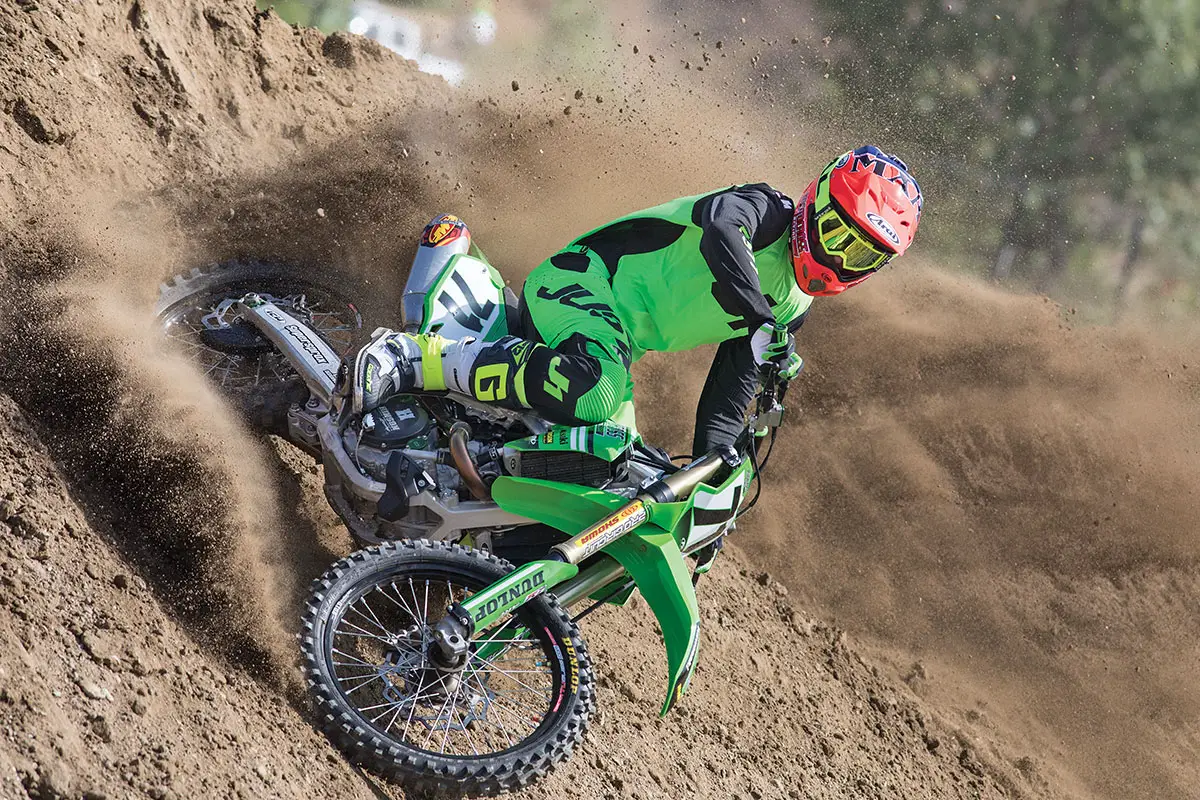
First on my list was the clutch. Kawasaki was the first Japanese motocross manufacturer to go to a hydraulic clutch. Many riders thought that hydraulics were going to make the mediocre KX450 clutch awesome. They were wrong. It quickly had issues. Even though we refer to it as a hydraulic clutch, the hydraulic part of the clutch is still less important than the mechanical parts of the clutch. All the hydraulics do on the KX450’s hydraulic clutch is operate the push rod that separates the plates. The rest of the KX450 clutch works as it did on the 2018 and earlier KX models, which wasn’t very well.
KTM has made hydraulic clutches seem magical, but that’s because every piece of the KTM clutch has been configured and reconfigured over the last 20 years to work as one piece. The KX450 clutch consists of two pieces that don’t work well together. Kawasaki’s hydraulic master cylinder does what it is supposed to do, but the old-school KX450 clutch parts are suspect. Mixing the good hydraulics with the bad mechanics aggravates the problem. Paradoxically, because of the smooth hydraulic feel, KX450 racers use the clutch more, and without the old-school cable, there is no longer an indicator to tell them when the clutch is heating up.
To make the clutch more durable and increase its power, I added a complete Hinson billetproof clutch kit (basket, inner hub, pressure plate, springs, fiber plates, steel plates and clutch cover). A Hinson clutch has tolerances that are approximately 30 times more precise than the stock KX clutch. The Hinson’s inner hub is specially designed to direct more oil toward the plates. On the KX450, the Hinson system worked more efficiently and cooler thanks to less friction, closer tolerances and better oil flow. As a result, the Hinson clutch stayed cooler, lasted longer and engaged stronger.
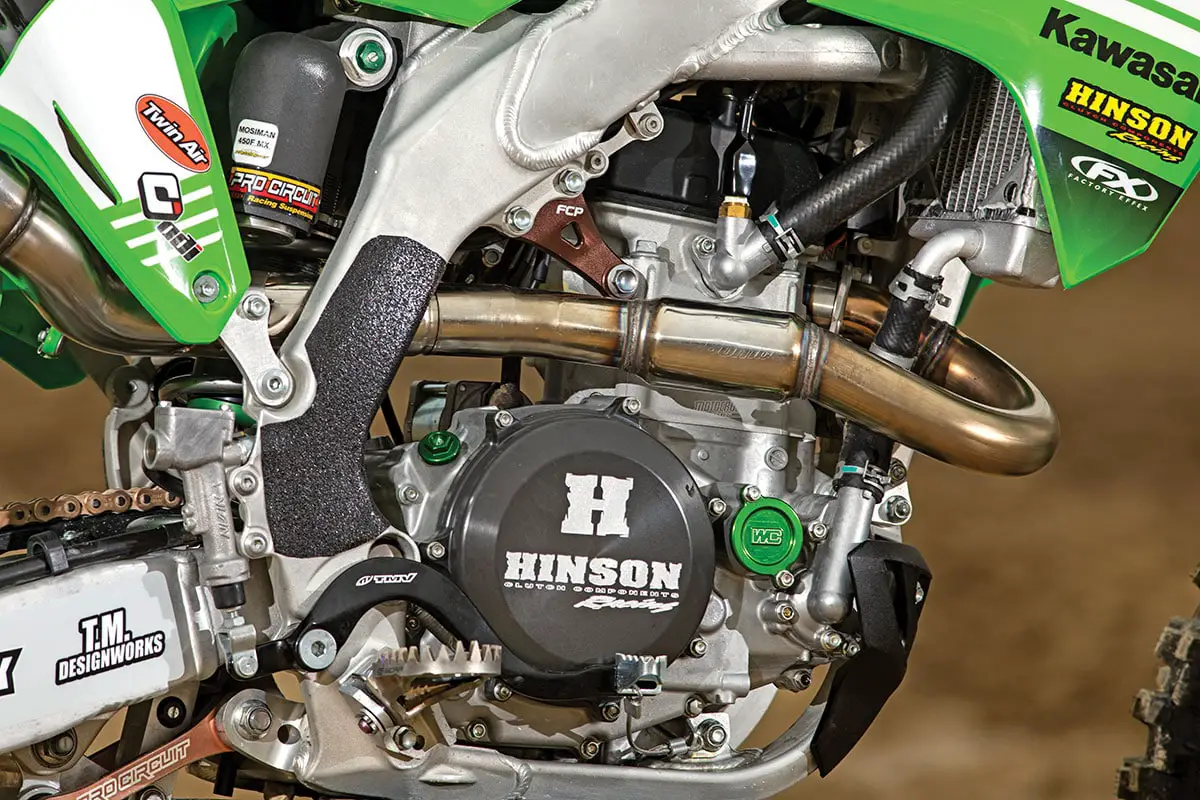
The complete Hinson clutch cost $1115.99. You probably remember five paragraphs earlier where I said I didn’t want to build a “budget-busting” race bike. So, if you don’t want to spend money on the Hinson system, I recommend removing the stock judder spring and replacing it with one additional full-size clutch plate. Additionally, you can run three stiffer Pro Circuit clutch springs mixed in with stock clutch springs for better actuation. Finally, I recommend replacing the stock clutch lever with ARC’s adjustable PowerLever. With it, you can adjust the clutch engagement ratio to six different settings to prevent the normal clutch slipping that occurs when the stock lever hits your fingers. This was our original solution to increasing longevity on the clutch until I added the full Hinson Racing system. For 2021, Kawasaki has borrowed some tech from KTM to make the mechanical parts of the 2021 KX450 clutch and enlarged the basket and plates to work in unison with their hydraulic master cylinder.
DON’T ASK WHY THE KX450 COMES WITH ANCIENT 7/8-INCH HANDLEBARS, BUT IT DOES. THE 2020 KX450 WILL BE THE LAST 450 MODEL TO EVER COME STOCK WITH 7/8-INCH HANDLEBARS.
Don’t ask why the KX450 comes with ancient 7/8-inch handlebars, but it does. The 2020 KX450 will be the last 450 model to ever come stock with 7/8-inch handlebars. Our big problem with the 2020 stock handlebars wasn’t that they were too small, it was that the KX450 handlebar mounts twisted every time we crashed. This twisting was caused by the overly soft rubber bar mount cones. On my 2020 KX450, I switched to oversized ODI CFT Podium handlebars, ODI oversized bar mounts and ODI Emig Pro V2 grips. I didn’t have a major issue with the 7/8-inch bars and liked the feel that they delivered over rough ground, but I prefer the durability and solid mounting of the 1-1/8-inch bars. For 2021, Kawasaki witched to oversized bars.
Surprisingly, I didn’t go all out in the power department. The 2020 KX450 is not the fastest bike on the track. It gives up an average of 3 horsepower at peak to all of its 2020 competition (save for the Suzuki RM-Z450). You would think that I would want more power, but I actually enjoyed the smooth and easy delivery of the Kawasaki engine. The only changes I made were to run the aggressive white coupler, switch out the stock filter cage for the Twin Air Powerflow kit and mount an FMF Powercore Hex 4 exhaust slip-on and Powerbomb header.
The stock exhaust is long, ugly, heavy and not much of a power producer. The FMF system delivered a more aggressive hit off the bottom and added usable power everywhere. Typically, I would have installed a titanium FMF system with the carbon end cap. It looks cooler and weighs less; however, the bonus features bump the price to $950. With the Powercore Hex 4, I had everything I needed for under $600. The handling of the 2020 KX450 is nimble and easy to turn into corners once you have the suspension dialed in. Vet test riders liked the soft stock damping with the stock 5.0 N/m spring in one leg and optional 5.2 N/m spring in the other leg. But, all of MXA’s faster test riders needed stiffer settings to stop the KX450 from bottoming over jumps. As an MXA guy, I could have ordered Showa A-kit forks, Kayaba Factory forks or WP cone valves for my project bike, but I didn’t go crazy; instead, Pro Circuit gave me its latest valving for the stock forks.

Pro Circuit’s suspension guru Luke Boyk asked me to test a prototype shock linkage system. The new linkage arm and bell crank smoothed out the action of the rising rate to the extent that it required a stiffer spring rate to compensate. With the trick link, I was able to get the rear wheel to track the ground better, especially on the choppy rough stuff coming into and out of corners. It wasn’t a ground-breaking improvement, but it did convince me enough to ask Luke to let me keep the linkage on the bike for the rest of the test.
I used Dunlop MX33 tires and Dubya USA wheels, but instead of installing standard inner tubes, I ran the Nuetech Tubliss system in both tires. When I tested Mitchell Falk’s BWR Engines CRF250, I was surprised to learn that the BWR Honda team used the Nuetech system in its rear wheels for the 2020 Supercross season. They preferred the Tubliss system because it allowed them to run lower tire pressures without the fear of getting a flat. Carlen Gardner, BWR team manager and 450 Supercross Pro, said that the system worked better on the starts, in the whoops and at corner exit. Typically, you see the Tubliss system on off-road bikes, but I decided to see how it would work in motocross. After testing it back to back against standard inner tubes, I came to the conclusion that I preferred the standard tube in the front; however, I liked the extra traction that the Tubliss provided in the rear.
For chains and sprockets, I used Supersprox sprockets. I wanted to try the heavy-duty O-ring chain to see how much longevity it would add, but I quickly realized it wasn’t for me. The heavier chain made the bike feel like it had more engine braking. It was slowing down harder when I chopped the throttle, which caused the front end to dive more. I switched to the Supersprox 520 chain.
MXA’s KX450 already had a TM Designworks chain guide and slide system, including the roller under the swingarm, before I started working on it. Every KX450 owner should do this on day one, because the stock Kawasaki chain guide, buffer pad and roller wear out at an alarming rate. TM Designworks uses a special plastic formula that decreases the friction on the chain. After riding with the heavier O-ring chain, I understand now more than ever how important it is to minimize chain drag. The TM Designworks setup was a no-brainer.
I was recently introduced to SteelHorse Innovations and its BewlBar. Like the Tubliss wheel setup, it intrigued me. The BewlBar is a replacement swingarm pivot bolt, but instead of being a solid steel tube, it has perforation that allows grease to be injected into the swingarm bearings through a grease nipple on the end of the bolt. This makes a normally messy job into an easy one.
Two components that I place heavy emphasis on are my seat cover and footpegs. With ultra-sharp and light Scar Racing titanium footpegs (FCP furnished the titanium footpeg pins) and a Blackbird Racing gripper seat cover, I was able to stay centered on the bike much better, which reduced arm pump. I also installed the unique Blackbird Racing seat bumps. The foam bumps came in a package with three humps on one piece of foam, so that’s how I installed it. Well, it turns out that the three humps were actually the small, medium and large options. I was supposed to choose one—and one only. They are not supposed to be used together. The two extra bumps aren’t beneficial, but I left them on to keep my body forward and competition distracted.
FOR CHAINS AND SPROCKETS, I USED SUPERSPROX SPROCKETS. I WANTED TO TRY THE HEAVY-DUTY O-RING CHAIN TO SEE WHAT KIND OF LONGEVITY IT WOULD GIVE ME, BUT I QUICKLY REALIZED IT WASN’T FOR ME.
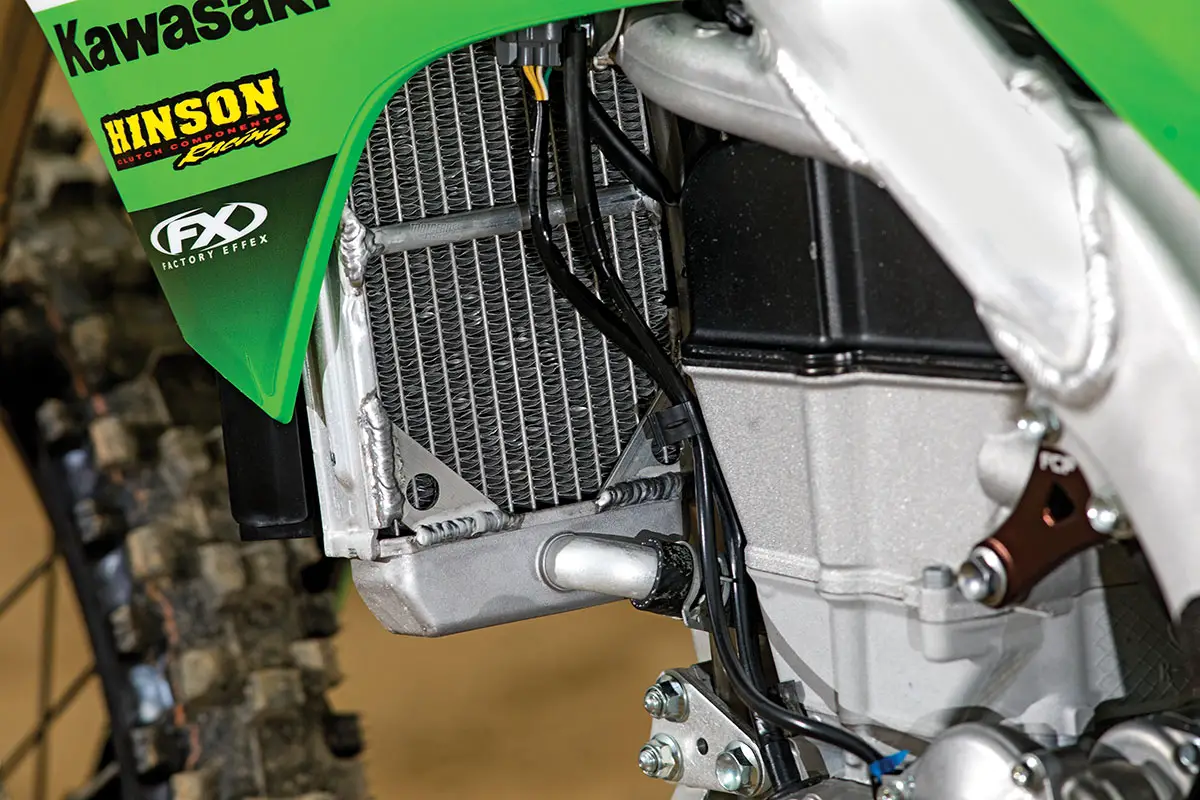
The MXA wrecking crew isn’t easy on bikes, and our 2020 KX450 was showing its age by the time I started to turn it into a project bike. It had 40 hours on it. The plastic was worn out and the radiators were bent from the occasional cartwheel. Instead of ordering new radiators, I sent the old radiators to ICW in North Carolina to have them straightened and reinforced. ICW does a great job, and they made the radiators stronger than stock with their custom bracing.
To make the rest of the bike look new, UFO provided the new plastic. Factory Effex designed the graphics. Scar Racing gave us its carbon fiber rear brake caliper guard, and I used a TMV shift lever and brake pedal and DP Brake pads. Works Connection also supplied us with its green engine plugs, Elite axle blocks, oil-filter caps, and custom clutch and front brake reservoir caps with my number and the letters “MXA” engraved on them to make me feel factory.
My goal was to improve the KX450’s weaknesses for an affordable price. I feel I accomplished that with a few bumps in the road. I enjoyed riding the KX450 in stock trim, but with the mods I made, I love it. I hope this acts as a road map to help you build your own full-race KX450.



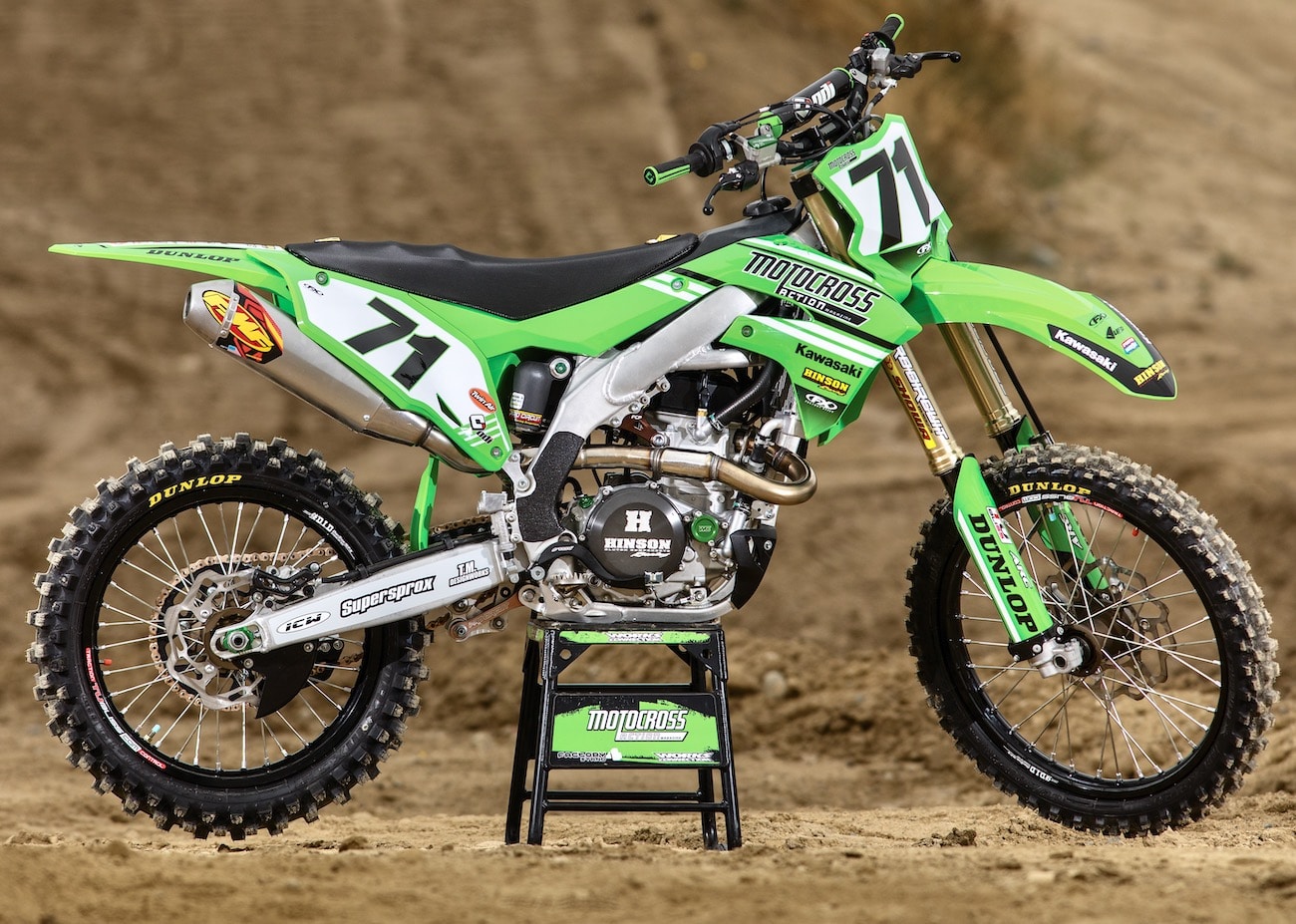
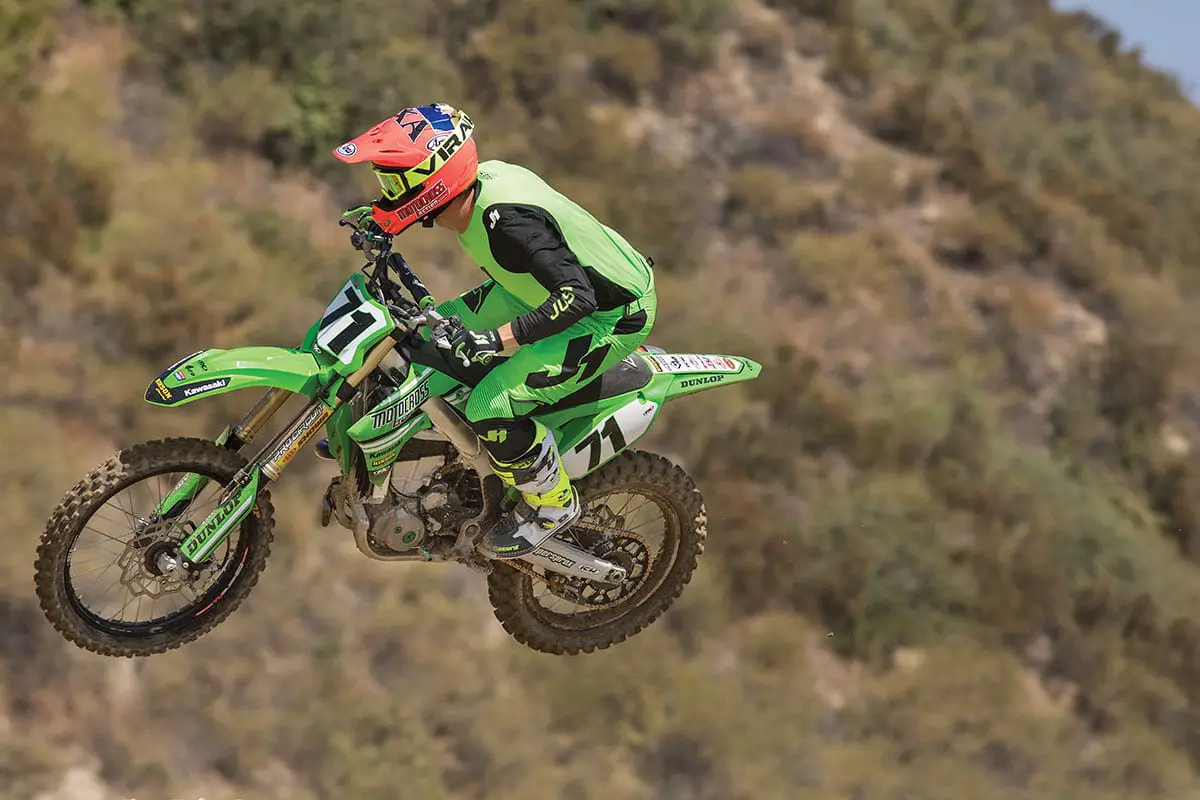
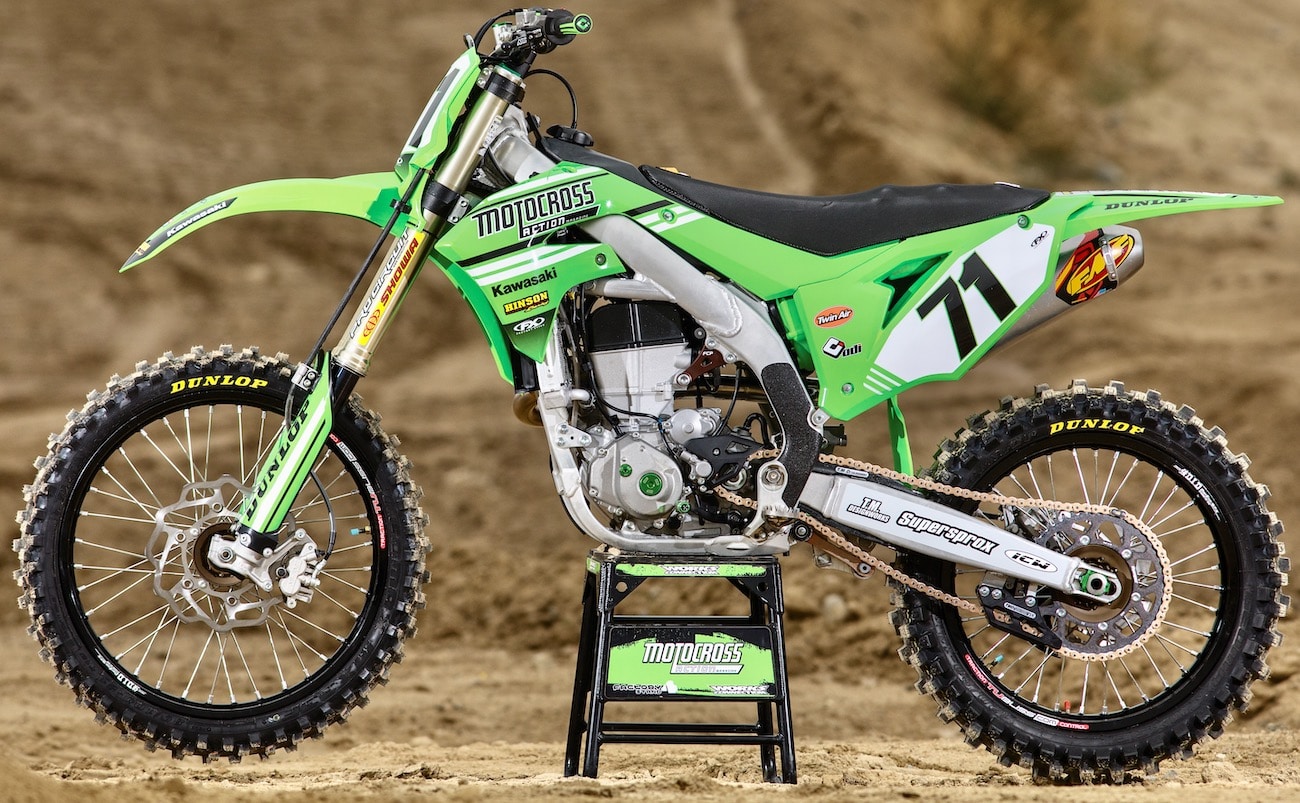

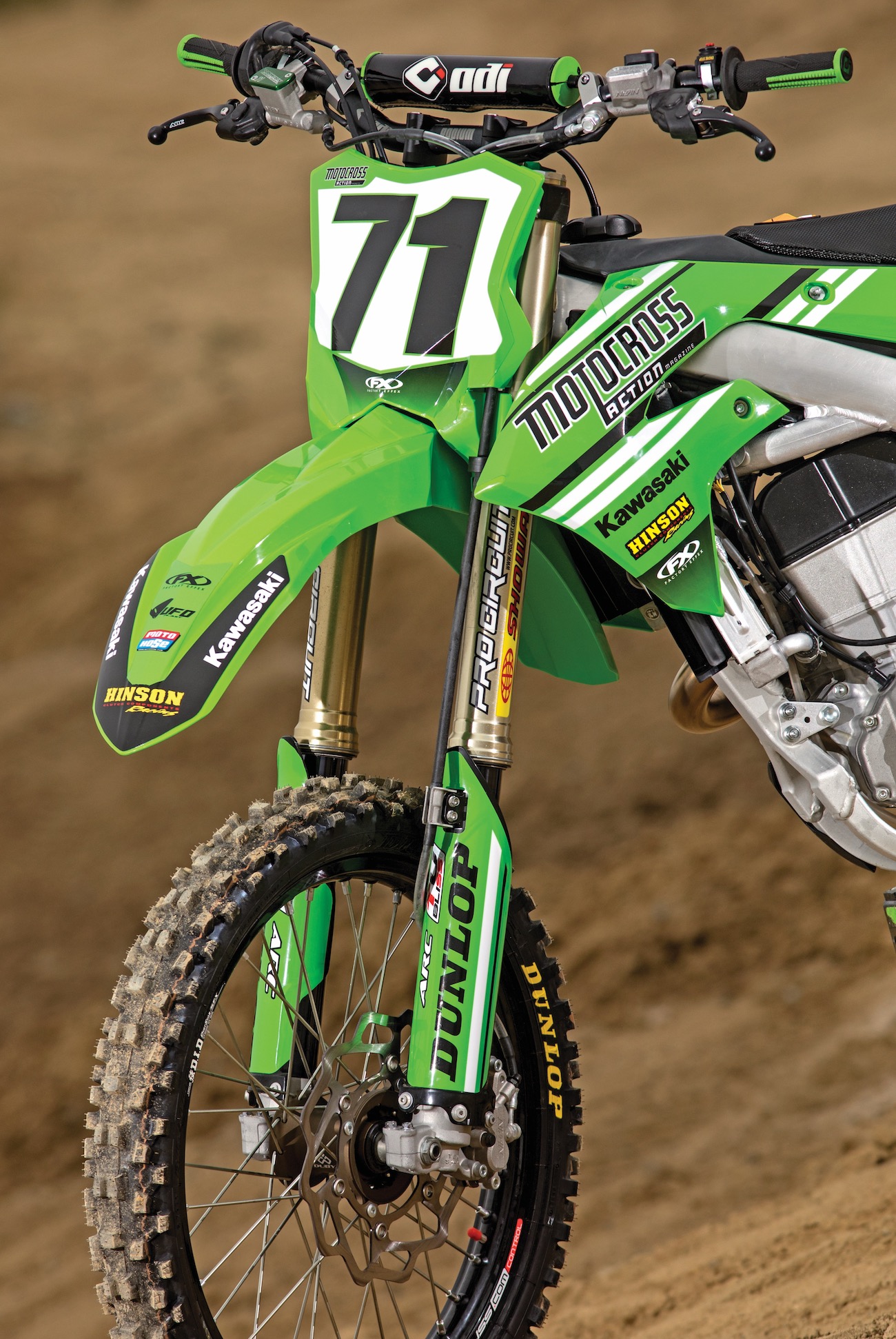
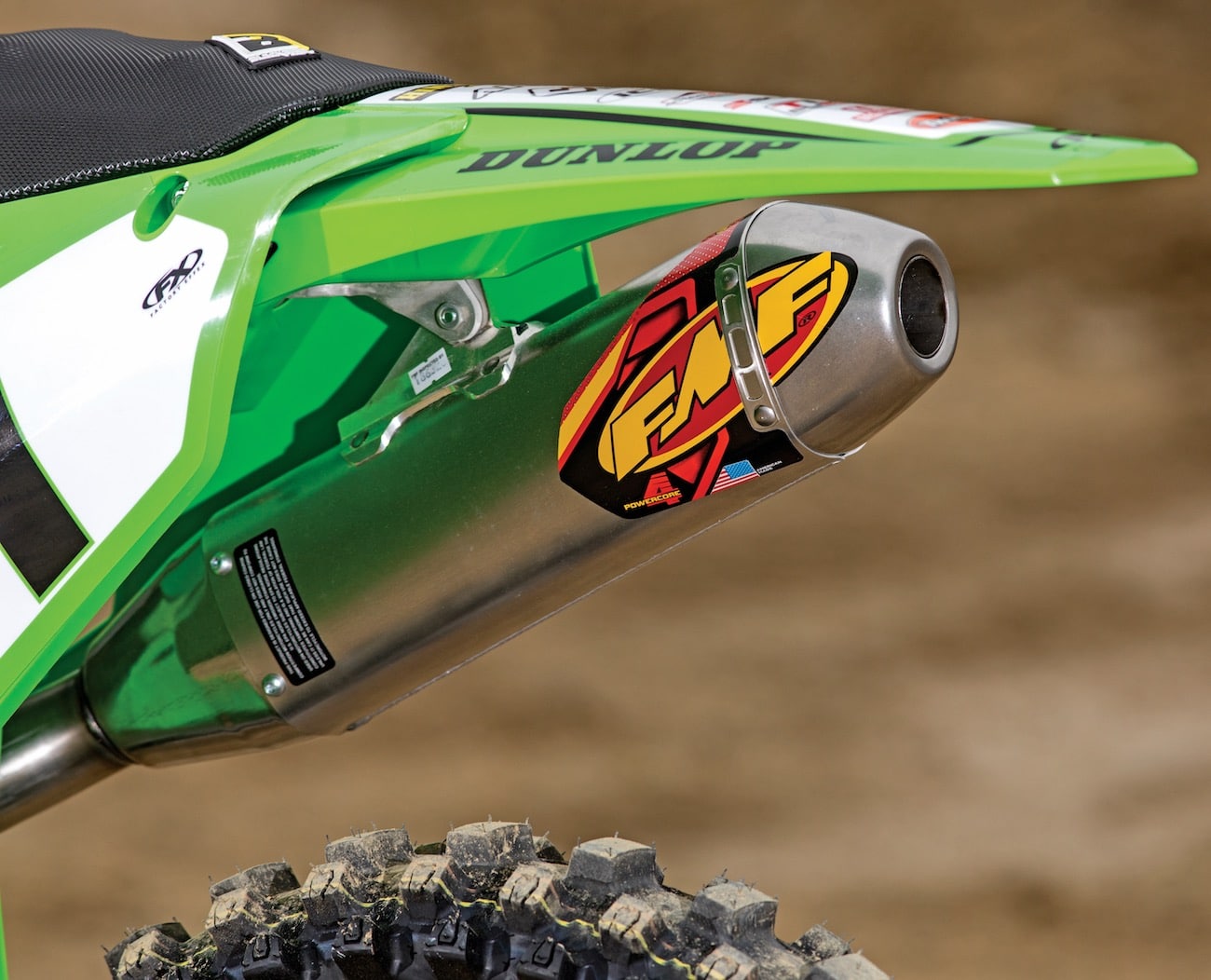

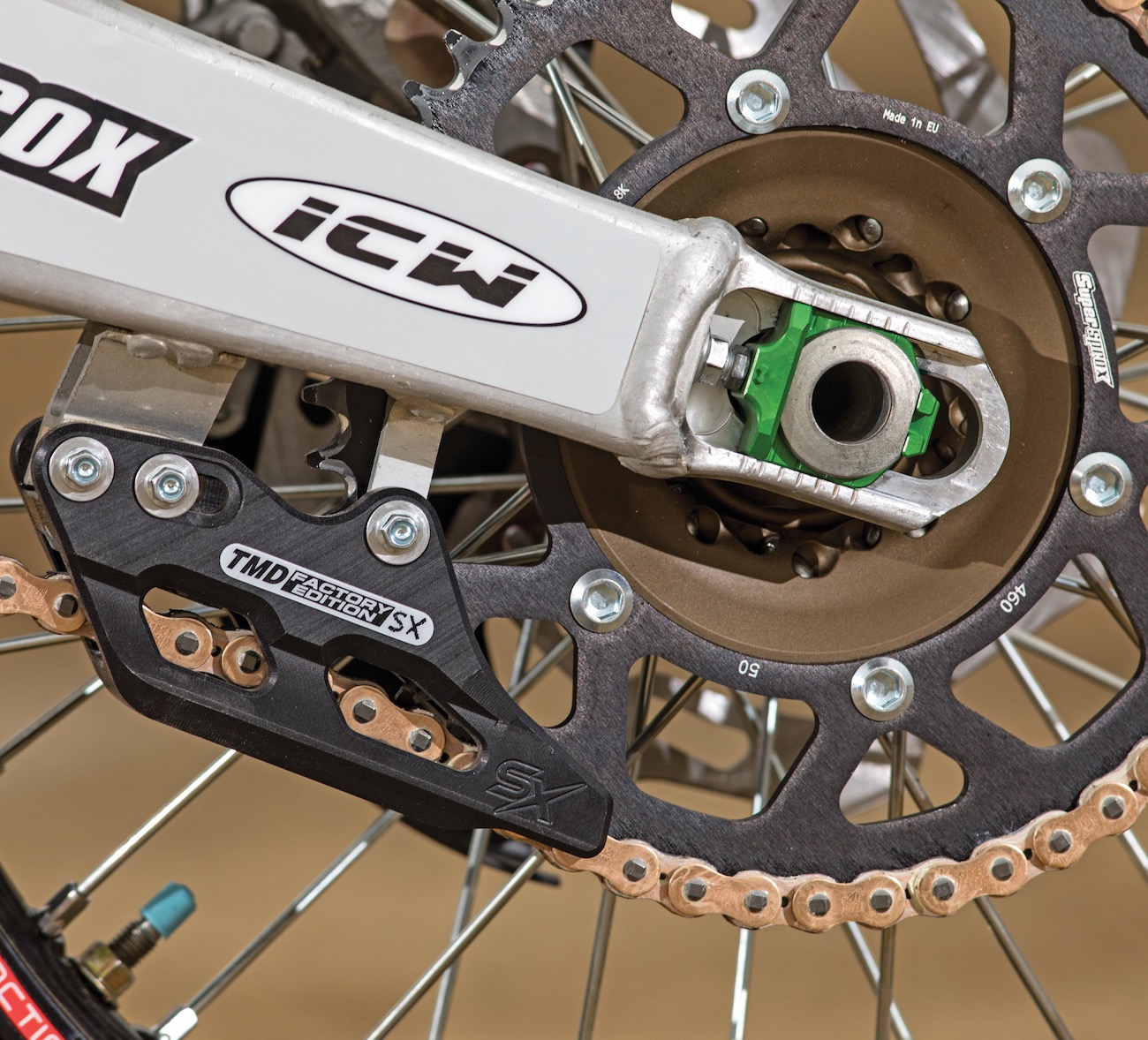
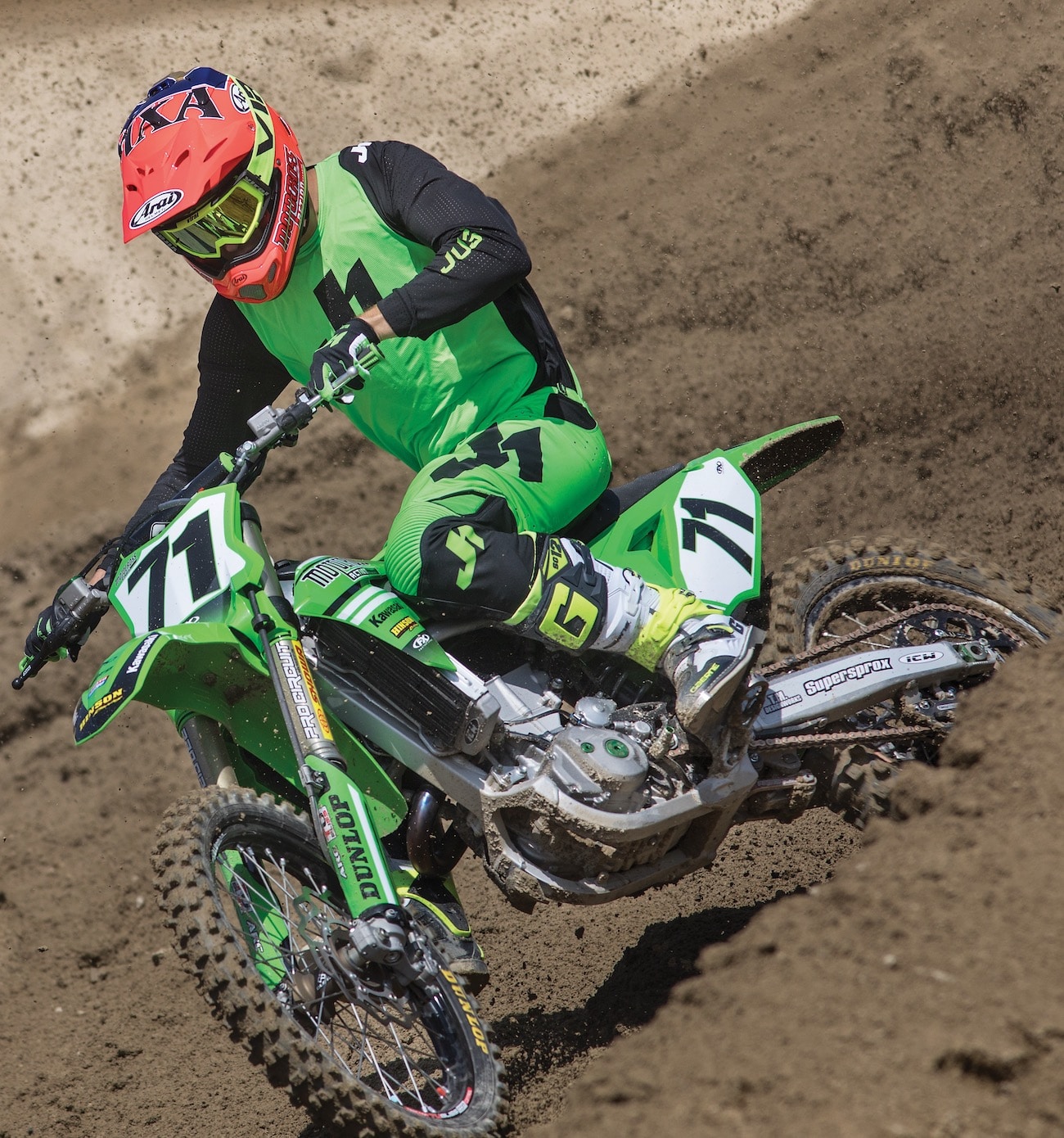
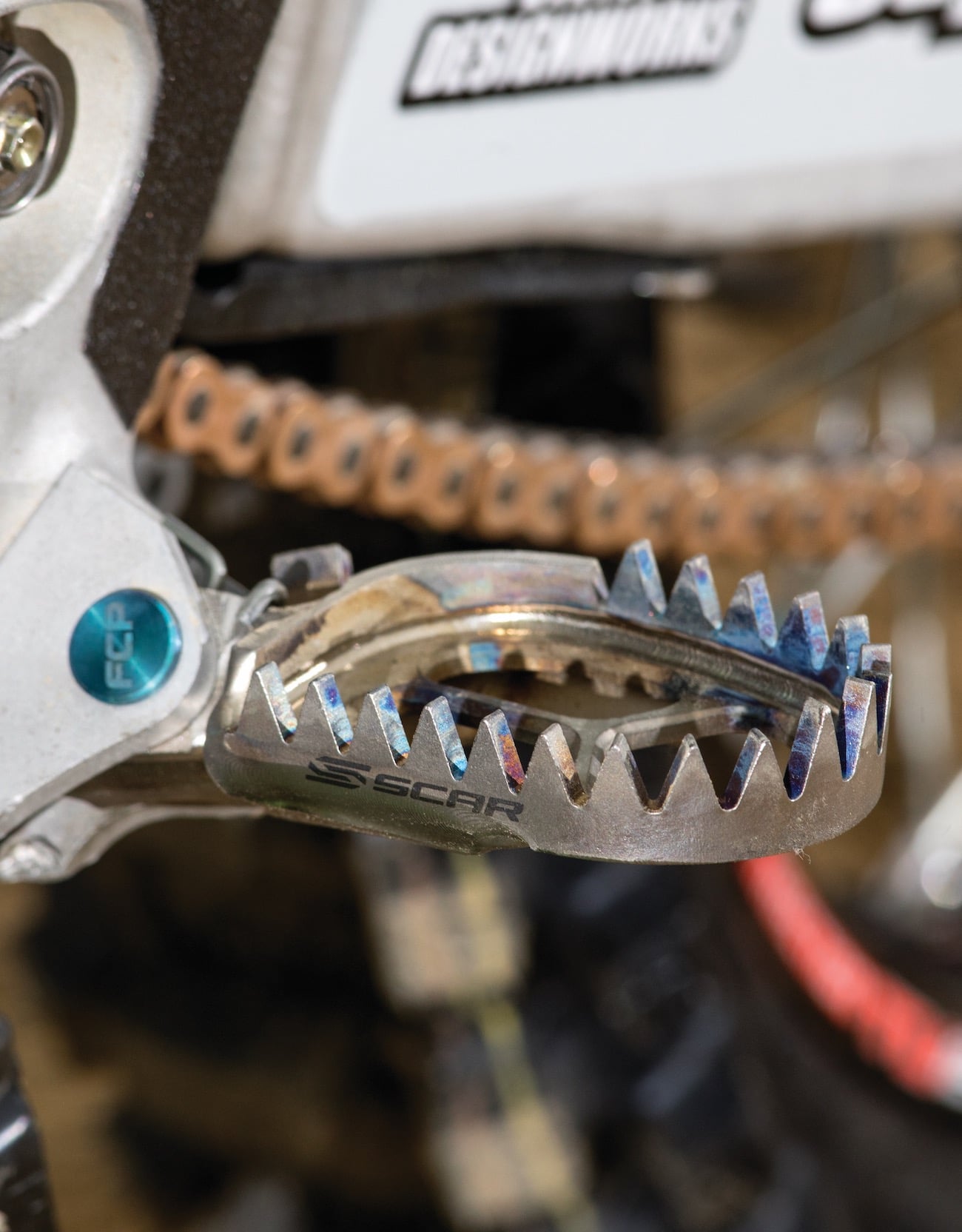



Comments are closed.